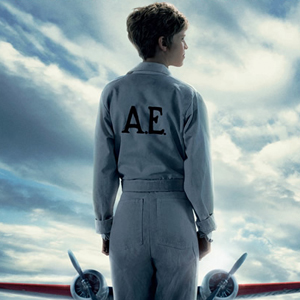 The great thing about movie magic is that it creates an essence that mentally takes us back in time and to a place that embodies something most of us will never have the chance to see in real life. What is even better is when that world uses a real-life character to create an awe-inspiring picture, which is exactly what director Mira Nair does in “Amelia.”
The great thing about movie magic is that it creates an essence that mentally takes us back in time and to a place that embodies something most of us will never have the chance to see in real life. What is even better is when that world uses a real-life character to create an awe-inspiring picture, which is exactly what director Mira Nair does in “Amelia.”
The biographical film, based on two books, “East to Dawn” by Susan Butler and “The Sound of Wings” by Mary S. Lovell, takes us through key events in the life of Amelia Earhart. We are taken through Earhart’s first journey as a passenger across the Atlantic in a Fokker F-VII, her organization of the the Ninety Nines, her journey to be the first woman to fly solo across the Atlantic and her disappearance on July 2, 1937 en route to Howland Island for refueling.
The crucial glue that holds the story together is the romantic love triangle between Earhart (Hilary Swank), publishing mogul George Putnam (Richard Gere) and Gene Vidal (Ewan McGregor). This love story is told with an old-fashioned feel that is a reminder of movies made in the 1930s.
Swank provides another Oscar-worthy performance as Earhart, and creates a well-rounded character whose life and death still remains a bit of a mystery. From the moment she is onscreen, Earhart’s spirit is perfectly captured while shades of her stubbornness shine through. We even get a humorous glimpse at Earhart selling out to commercials to make money.
On the other hand, Gere does what he can with his role, which is basically that of the man encouraging his wife. This is Earhart’s story, but a little more information on Putnam would have been very interesting to see. The story tells of their early courtship, their marriage in Connecticut, how he supported and eventually funded her doomed mission and how an outsider almost ruined their marriage. Gere is solid and believable every step of the way, and makes Swank’s performance even better.
McGregor  portrays Vidal (Yes, Gore Vidal’s father, who is portrayed by a wonderful child actor named William Cuddy), who was a teacher of Aeronautics at West Point, the founder of three American airlines and director of the Bureau of Air Commerce from 1933 to 1937. McGregor is a dashing leading man, and has a natural screen presence. His performance conveys lust and worry for Earhart on her journeys, and it is easy to understand why she almost sacrifices her marriage for Vidal. McGregor continues to excel in any picture he is in.
However, the Academy should take note of the performance of Christopher Ecceleston (“G.I. Joe: The Rise of Cobra”) as Fred Noonan, who was on the doomed flight with Earhart. He plays one of the best aerial navigators, who also has a serious drinking problem. Working with a wide range of emotions in a tiny amount of time, he creates a palpable performance for a unique historical figure.
What adds authentic detail to the movie aside from the wonderful performances are the detail that went into recreating this world. Earhart’s plane, “The Electra,” is built so perfectly that it deserves to be in a museum, and is one of the few models of this plane still in existence today. Similar to looking for actors, the director searched around the world for this model before he discovered one in France.
On top of that, cinematographer Stuart Dryburgh manages to create the feel of a sweeping, old-fashioned epic, and perfectly captures the time and place. The picture is clear and crisp as it handles an occasional black-and-white scene.
Visual-effects supervisor Wojciech Zielinski (currently wrapped up “Boondock Saints II: All Saints Day”) flawlessly re-creates effects that complement the material.
“Amelia,” aside from being a reminder of old-fashioned epic tales, also has shades of Steven Spielberg’s work and love of planes. (One can’t help but draw comparisons with “Empire of the Sun.â€) One can only hope that audiences embrace this beautiful picture.

Leave a Reply